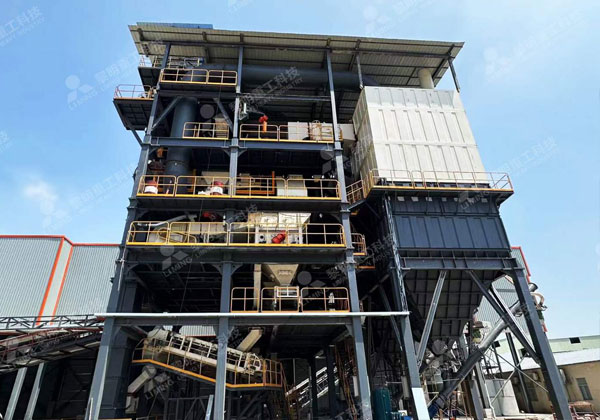An aggregate crushing station plays a crucial role in various construction and infrastructure projects by processing raw materials into usable products. This station typically comprises several key components, each serving a specific function to ensure efficient and reliable crushing operations. The following is an overview of the essential components found in a typical aggregate crushing station:

Primary Crusher For Aggregate Crushing Plant:
The primary crusher is the initial step in the crushing process and is responsible for reducing the size of raw materials such as rocks or gravel. Common types of primary crushers include jaw crushers, gyratory crushers, and impact crushers. These crushers break down the larger materials into more manageable sizes, setting the stage for subsequent crushing stages.
Secondary Crushers For Aggregate Crushing Plant:
Secondary crushers are used to further reduce the size of the crushed materials from the primary crusher. Cone crushers and impact crushers are commonly employed as secondary crushing equipment. Their role is crucial in achieving the desired final product size and shape.
Vibrating Feeders For Aggregate Crushing Plant:
Vibrating feeders are responsible for transferring raw materials from the primary crusher to the next stage of the crushing process. These feeders regulate the flow of material, ensuring a consistent and controlled feed to the subsequent crushers. This helps optimize the crushing efficiency and minimizes the risk of overloading the crushing equipment.
Screens For Aggregate Crushing Plant:
Screens are essential components that classify the crushed materials based on their size. They can be either inclined or horizontal and are equipped with different-sized openings to sort materials into various categories. Screens help separate the finer particles from the coarser ones, contributing to the production of high-quality aggregates.
Conveyors For Aggregate Crushing Plant:
Conveyors play a vital role in transporting materials between different stages of the crushing process. They facilitate the continuous flow of materials, ensuring seamless operations. Belt conveyors are commonly used to transfer crushed materials from one point to another, connecting various components within the crushing station.
Control Panel and Automation Systems:
Modern aggregate crushing stations are equipped with sophisticated control panels and automation systems. These systems monitor and regulate the entire crushing process, allowing operators to adjust settings, track performance, and troubleshoot issues. Automation enhances efficiency, reduces downtime, and ensures a safer working environment.
Dust Suppression Systems:
Dust suppression systems are crucial for maintaining a healthy and safe working environment. These systems help control and minimize the generation of dust during the crushing process, reducing respiratory hazards for workers and preventing environmental pollution.
Generator Sets and Power Supply:
Reliable power supply is essential for the continuous operation of the crushing station. Generator sets are often used to ensure a stable and uninterrupted power source, especially in remote or mobile crushing stations where a reliable grid connection may not be available.
An aggregate crushing station integrates various components to process raw materials efficiently and produce high-quality aggregates for construction purposes. Each component plays a unique role in the overall operation, contributing to the station’s productivity, reliability, and safety. Advances in technology continue to drive improvements in these components, enhancing the overall performance of aggregate crushing stations in the construction industry.
